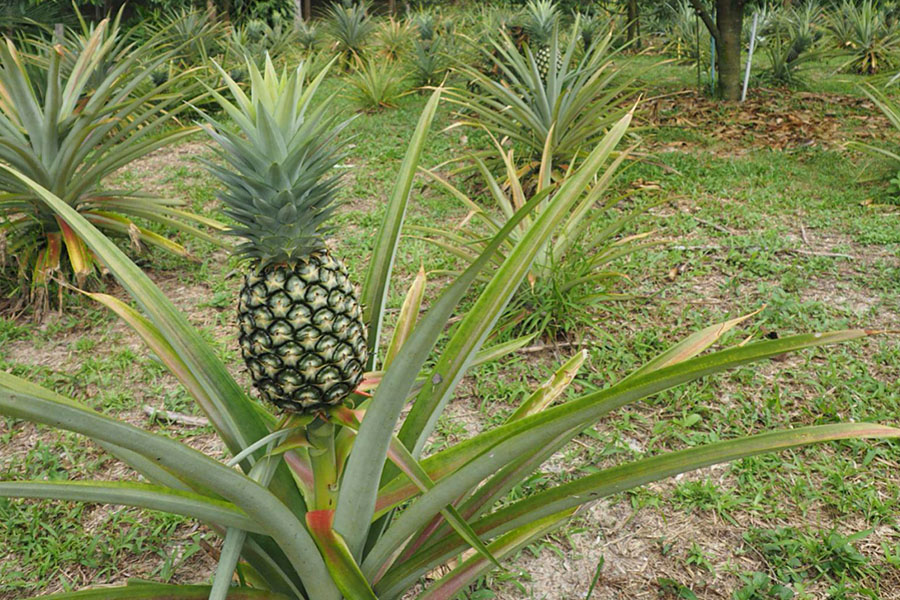Members of the Nature-based Insights team recently visited a project in Thailand, to support the design of field-based measurements of the impact of Reckitt’s latex supply chain. Looking specifically at ecosystems that may be affected by upstream rubber production, the fieldwork complemented the development of agroforestry nature-based solutions currently being implemented by Reckitt and their local implementation partner, Earthworm Foundation.
A lot of analyses examining supply chain impacts on biodiversity rely on external sources of data; commonly aggregating the latest developments in geospatial data with different sources of information from scientific literature and company data.
However, it remains crucial to continuously assess the effectiveness of nature-based solutions on the ground, especially considering the inherent uncertainty in predicting how nature will respond. By actively engaging with affected communities, local research departments and governmental bodies and closely collaborating with local civil society organisations, we can learn more about the deep and complex relationships between communities and the natural environment.
The NbI approach uses field validation (otherwise known as ‘ground-truthing’) to verify project data and ecological models. This process contributes to the accuracy and credibility of environmental initiatives, by physically confirming data on-site and overcoming limits of global modelling approaches. This verification process offers several benefits:
- Credibility and Transparency: Through independent verification of data. Incorporating ground-truthing into sustainability reporting demonstrates a dedication to accountability and integrity.
- Effective and Adaptive Decision Making: Accurate data enables companies like Reckitt to make informed decisions about the effectiveness of their sustainability projects. It helps identify areas that need improvement and supports evidence-based adaptive management, enabling continuous learning from projects, to achieve desired outcomes.
- Regulatory Compliance: Ground-truthing ensures that a company’s sustainability data aligns with reporting requirements and regulations.
- Resource Optimisation: By measuring and validating the impact of projects accurately, resources can be efficiently distributed.
- Stakeholder Engagement & Empowerment: By visiting projects and demonstrating transparent, verified results, trust is fostered between stakeholders, project partners and community members. Involving local stakeholders also ensures that local knowledge of nature and habitats is integrated within design and implementation.
The visit to Reckitt and Earthworm Foundation’s agroforestry projects highlighted the variation in how farmers had implemented the agroforestry concept. The design of these systems reflects farmer priorities, the characteristics of their land, and their knowledge of how crops interact with each other. Thus, ground-truthing helps capture this diversity of systems and ensures that monitoring and evaluation is reflective of the local context. Through this approach, we can build a deeper understanding of the social and economic well-being impacts of ecosystem services and biodiversity across a landscape.

On one of the agroforestry demonstration farms, a farmer mixed up to thirty crop types on a single 2.5ha plot of land. Through learning and testing, this introduced various micro habitats; such as small-scale wetlands for flood risk reduction and household water supply, tree islands to reduce evaporation rates, and planting of leguminous understories of cash crops such as tamarind to supplement income and improve soil fertility. Although this diversified system requires more manual work, the farmer was enthusiastic about the changes seen on the ground – to the extent that he wants to help spread his knowledge and help others overcome cultural barriers, to assist the widespread implementation of diverse rubber agroforestry systems.

Compared to a fully mixed system spread across several systems, one lead farmer structured their land as a mosaic of monoculture and intercropped parcels of rubber, timber, pineapple, banana and jackfruit. These are set around a river that cuts through their land, on the banks of which he has planted native riparian palm to reduce erosion. Ground-truthing our knowledge through site visits allows the full extent of the project to be captured, including noting the reasons why farmers have implemented different ideas in different places, based on their local knowledge.
24 August 2023




